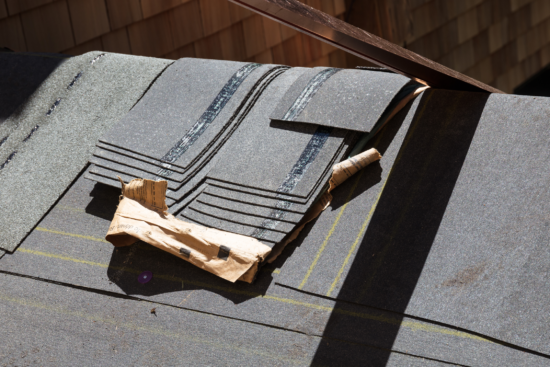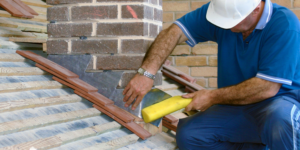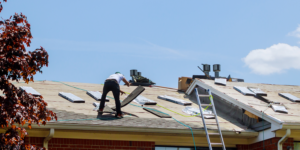© All Rights Reserved | Roof Replacement and Repair - Zaman Roofing LLC. | Website Design & CT SEO Powered by High Point SEO CT
- Google Rating5.0Based on 33 reviewsZaman Roofing - CT Roofing Contractors & Roof Repair5.0Sergey Y."Zaman Roofing” recently completed a roof replacement project in our condo complex, and we are extremely satisfied with their service. From start to finish, their team demonstrated professionalism, efficiency, and exceptional craftsmanship. They were prompt in their communication, providing detailed explanations and answering all our questions. The crew arrived on time, worked diligently, and completed the project within the estimated timeframe.Not only did Zaman Roofing exhibit outstanding technical skills, but they also ensured minimal disruption to our daily activities. They took great care to protect our property, cleaning up thoroughly each day and leaving no trace of debris behind.The quality of the new roof is outstanding. Zaman Roofing used top-grade materials and paid attention to every detail, resulting in a sturdy and visually appealing finished product. The roof has significantly enhanced the overall appearance of our condo complex.We would highly recommend Zaman Roofing to anyone in need of roofing services. Their professionalism, expertise, and attention to customer satisfaction make them a reliable choice for roof replacements. We are grateful for their excellent work and would not hesitate to hire them again in the future.Christopher Z.Zaman Roofing was AWESOME!!!! This is my third time doing a roof in CT on my third home and Zaman did an outstanding job on my rather unique roof line. They even replaced a skylight. I needed a Roof Contract in place before insurance would allow the purchase because the seller was a DeeBag. Zaman worked with my realtor, banker, etc and even waited patiently while the seller delayed the process by 4 months. The week I closed, Zaman Roofing was up and at em. Stripping, prepping and replacing. In and Out. Property was nice and clean after the work was complete. I would highly recommend.Steve TZaman Roofing, located in Berlin, CT, truly excels in providing top-notch roofing services. I am absolutely thrilled to give them a well-deserved 5-star review for their outstanding work. They have proven themselves as experts in roofing Berlin CT, and I couldn't be happier with the results.When it comes to roofing in Berlin, Zaman Roofing stands out from the competition. Their team of skilled professionals demonstrated exceptional attention to detail during the installation of my new roof. They meticulously handled every aspect of the project, ensuring both aesthetics and durability were top-notch.What impressed me the most was Zaman Roofing's commitment to customer satisfaction. From my initial contact with them, they were responsive, courteous, and eager to understand my specific roofing needs in Berlin. Their exceptional customer service throughout the entire process made me feel valued as a client.Zaman Roofing's expertise in roofing Berlin is truly commendable. They have an extensive portfolio of successful projects throughout Berlin, CT, showcasing their skill and knowledge in a variety of roofing styles and materials. Regardless of the complexity of the job, they have the necessary resources to deliver exceptional results.I cannot emphasize enough how satisfied I am with Zaman Roofing's services in Berlin, CT. Their professionalism, reliability, and dedication to their craft are unparalleled. If you're searching for exceptional roofing services in Berlin CT, Zaman Roofing is the company to choose. They will exceed your expectations in every way.In conclusion, Zaman Roofing unquestionably deserves a stellar 5-star rating for their exemplary roofing services in Berlin, CT. Their expertise in roofing Berlin and roofing Berlin CT shines through in their exceptional workmanship and customer service. I highly recommend Zaman Roofing for all your roofing needs.Gary G.Zaman replaced the roof on my 2,200 sq. ft. colonial in 2015. The workmanship was perfect. Unfortunately, over time, the top-of-the line shingles discolored. He was totally supportive in getting the manufacturer to replace them at no cost to me. He just replaced the roof with the new shingles. It was another perfect job. It was completed in one day. The crew was great and they cleaned the area spotless.Chris DWe used Zaman Roofing for our Roof and Gutter Replacement, I acquired 5 quotes for the work and found Zaman to be the most reasonable, it was a Good Decision to choose Zaman Roofing, Seweryn was Professional in every aspect and the Clean-up was nothing short of Amazing, I would Highly Recommend using Zaman RoofingRobert D.Excellent Service and Value - great crew and easy to deal with - highly recommended !Sunghoon P.Great work and reasonable price. I am so happy with their service. I asked a bunch of questions before and after the service and his responses were very prompt and straight to the point. Highly recommend.Adrienne M.I am so pleased that I used this company. My new roof looks fantastic. Such a hard working crew. Seweryn was informative and professional. Price was very completive. Don't hesitate to use them you will be very satisfied. Highly recommend!Nancy M.Good communication, timely response and knowledgeable. Very happy with our experience and highly recommend this company.Beata M.We used Zaman for our roof replacement recently and are very pleased. They replaced our roof in one day and gave us a very competitive quote. Good quality of work. Highly recommended.Lori K.They were here when they said they would. Professional & left everything neat ,cleaned up everything. They were in & out in a day & a half. Would recommend Zaman roifing.Dan R.A+ service, professional and quick response time.Anna G.Zaman and his crew provide great workmanship they installed new roofs they take great pride in the work they do. They were punctual and did a amazing job with the roof installation and clean up. Highly recommend Zaman Roofing to family and friends. Thank you for the opportunity to work with such a amazing contractorScott M.Awesome contractor, I would highly recommend him to family & friends. Seweryn & his crew were here on time & worked diligently. They were the happiest workers I've ever dealt with (I am a former construction project manager with the Federal government). Any & all questions were answered. My neighbors couldn't believe they finished the job in one day & complimented how great the new roof looks.Clement D.Great roofing contractors. I love to recommend it to my friends and family.Karen 9.With the quality, price, timeliness, all round nice guy and great crew, Zaman Roofing LLC is what other companies aspire to be.... Clean, helpful and a pleasure to recommend....james C.Excellent experience from start to finish, all appointments and work times met in a timely fashion, workmanship and clean up left nothing to be desired.Would be a definite recommendation, very pleased.Margaret B.I had obtained multiple quotes and did my due diligence research and Seweryn Zaman came back with fair price and good recommendations. He was professional, explained everything that he was going to do and never once he rushed me during decision process. He showed up on time with his hard working crew and finished my roof in one day. I was amazed with his crew who worked like busy bees. Very impressed with the clean up process and the end product. Two months after he finished my roof he was still helping me deal with the insurance company making sure I had everything I needed. Thank you SewerynSteve B.Very professional and easy to work. The crew came in, replaced my roof and then cleaned up everything! Highly recommended.Jim O.Competitive quote among four others. Seweryn Zaman provided larger color samples of the shingle colors we were interested in. He obtained the building permit, showed up on the day expected with his entire crew. Our older roof was on 24" trusses and needed more plywood replaced than anticipated. He got the additional sheets replaced on the day of the re-roofing. The crew worked with him late until the job was done and picked up every piece of old debris. The roof passed final town inspection with no concerns. Zaman Roofing is easy to deal with; he's responsive on text messages and phone calls. I used them in the past for an emergency repair and he found a well-hidden leak from the builder.Dale C.The crews did a good job, and the leader of the crew did a great job when they replaced the roof of my house in Farming on 7/6&7 this year. When they worked on the project, they worked professionally and in detail. We are very pleased with the work they have done, and highly recommend people to have the company worked on their roof projects.Forrest B.Zaman's was very professional, excellent quality of work and very responsive to our needs. This roofing experience was excellent from start to finish and provided an excellent value. Would certainly recommend them to any friend.Yonatan M.We used Zaman Roofing to replace our roof in 2019 and could not be happier with the service and product. A highly professional company and great personal interaction with the owner. The workers took great care of our landscaping, and the owner was there frequently to supervise the work and take care of finishing touches like flashing the chimney. We have had zero issues since then and highly recommend this company.Quinn V.Zaman was awesome. He was communicative, on-time, and was able to give me a quick inspection of our roof despite the rain. I rarely have a contractor tell me that I didn't need to spend any money, but Zaman told me my roof was fine for the next several years.magdalena K.We recently used Zaman Roofing to replace our 26-year-old roof. Right from the start they were great! Sevy was extremely professional and knowledgeable and gave us a great quote. Everything was done as they described and the final project looked great. The owner was on the job from start to finish as he promised.Ariadna G.Our experience with Zaman Roofing was excellent. I was very impressed with both their work and their customer service. Seweryn was very knowledgeable and professional.Larry G.What a wonderful business. Very responsive. They showed up exactly when expected, completed the project quickly and accurately and left no trace after clean up. All with a very competitive price. I would highly recommend Zaman to anyone looking to have roofing work done.STEVE R.I was very pleased with the roof and gutter repairs performed by Zaman Roofing on two of my buildings. Good workmanship and fair prices, I would recommend and use again.Danielle D.These guys stripped and reshuffled my roof is 1 day! They did an awesome job. Roof is beautiful. He uses a dump trailer which is great and they cleaned up well. Very happy with the work. Also pricing was fair.

What is flashing on a roof? This is just one of the answers to your most important roofing questions
Category: Roofing • October 30, 2023
The term “flashing” on a roof describes the little, waterproof strips of metal or another material that are affixed to different parts of the structure to stop water leaking through. These regions encompass the valleys formed by the intersection of two roof planes, as well as the spaces surrounding chimneys, skylights, and vent pipes. Flashing is used to establish an impenetrable seal and guard against leaks in sensitive regions. If your flashing isn’t done correctly, water can seep into your house, causing serious damage and expensive repairs.
So, it’s imperative to take quick action if you see any indications of water intrusion or believe that your equipment may be compromised. It is strongly advised that you get a qualified roofer to examine and fix any broken flashing. Recall that sustaining the longevity of your roof and shielding your house from potential water damage depends on having sturdy and intact flashing.
Knowing About Roof Flashing
Roof flashing is an essential part of a well-constructed building. Long-term, expensive damage can be avoided by homeowners by being aware of its installation and purpose. Roof flashing is essentially a thin strip of material, usually metal, put at places where the roof meets other structures, such as vents, skylights, or chimneys.
Its primary purpose is to divert water away from these weak spots and form an impenetrable seal. Flashing keeps water out of the roof and preserves the structural integrity of the whole building. Step flashing, valley flashing, and drip edge flashing are a few different types of flashing.
Every variety is intended for particular regions of the roof. To prevent further leaks and water damage, flashing must be put correctly and inspected on a regular basis. In conclusion, homeowners must comprehend the function of roof flashing in order to maintain a secure and waterproof roof.
Roof flashing: Where Is It Used?
An essential part of building construction is roof flashing. It is employed in a number of locations to stop water leaks and preserve the structural integrity of the building. Providing a waterproof seal around any roof joints or openings, such as dormers, vent pipes, chimneys, and skylights, is the main function of roof flashing. It is also utilized to safeguard sensitive regions, such as valleys, and ridges, where several roofing materials converge. Typically, roof flashing is composed of sturdy materials that are resistant to corrosion, such as metal or plastic, and can endure severe weather.
Roof flashing may occasionally need to be constructed specifically to meet specifications. For roof flashing to be efficient in preventing water damage and extending the life of the roof, proper installation is essential. To spot such problems and take quick action, roof flashing needs to be regularly inspected and maintained.
The Value of Adequate Ventilation
Ventilation is necessary in any building, whether residential or commercial. Maintaining a safe and comfortable environment requires allowing fresh air to circulate and eliminating poisons and smells. Stiffling indoor air from poor ventilation can lead to mildew, respiratory issues, and odors. Insufficient ventilation can also cause harmful compounds and gases, such as carbon monoxide, to accumulate.
Good ventilation reduces the risk of allergies, asthma, and other respiratory diseases. It also controls humidity, preventing mildew and mold formation. Furthermore, by enabling the escape of surplus heat during hot weather and lowering the requirement for excessive air conditioning, adequate ventilation can improve energy efficiency.
Therefore, in order to create a more comfortable and healthy living or working environment, effective ventilation must be given first priority.
What kinds of roofing materials are there to choose from?
There is no shortage of options for homeowners when it comes to roofing materials. The alternatives are numerous, ranging from more contemporary options like metal roofing and synthetic slates to more conventional ones like wood shakes and asphalt shingles. There are benefits and drawbacks specific to each kind of roofing material.
For instance, while inexpensive and simple to install, asphalt shingles might not be as long-lasting as alternative materials. Although wood shakes have a more natural and rustic appearance, they are more maintenance-intensive and prone to fire. Although metal roofing is long-lasting and energy-efficient, downpour noises can still be heard through it. Conversely, synthetic slates are more affordable while still having a similar appearance to real slates.
The final decision for roofing material will be based on a number of variables, including climate, budget, and personal preference. Homeowners should do their homework and speak with roofing experts to get the best solution for their unique requirements.
The Significance of Expert Roofing Services
For your roof to remain durable and intact, professional roofing services are essential. Their proficiency and specific understanding enable them to manage a range of roofing problems, from small fixes to total replacements.
Choosing expert services will guarantee that the task is completed accurately and quickly, thereby saving you money and time. With their access to top-notch supplies and cutting-edge equipment, these professionals can guarantee that your roof is constructed to endure the weather and safeguard your house. Professional roofers are also trained in safety procedures, which reduces the possibility of mishaps happening while the job is being built.
In order to provide you peace of mind and confidence that they stand behind their skills, they also offer warranties for their work. Therefore, don’t accept anything less than expert roofing services when it comes to your roof. Put your trust in the professionals to keep your house secure.




